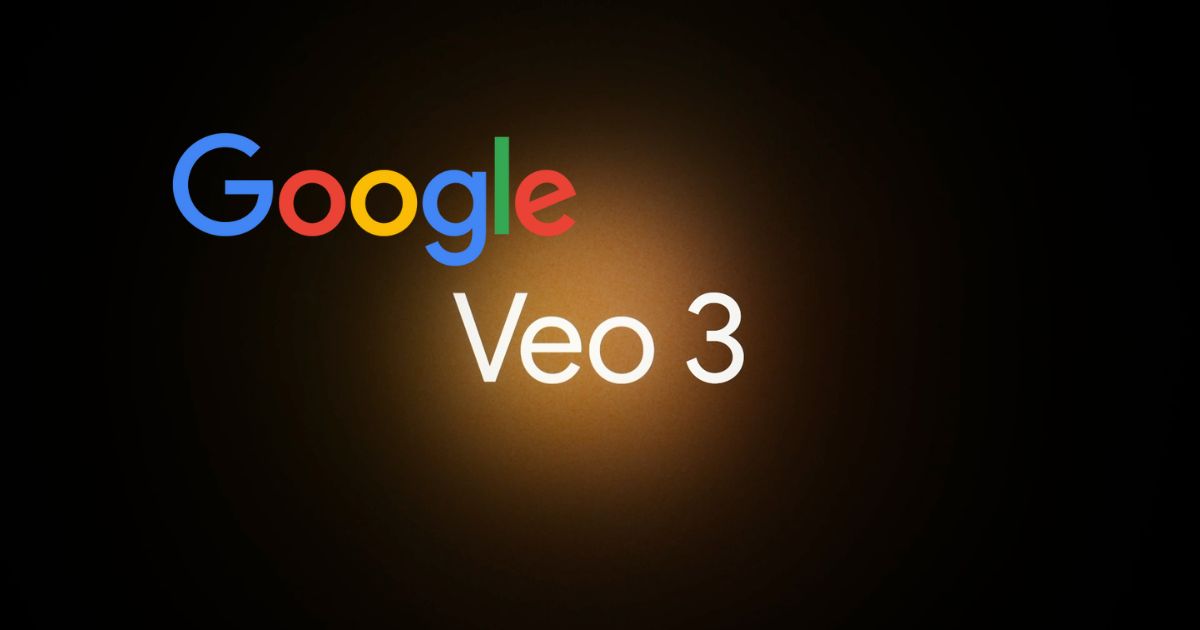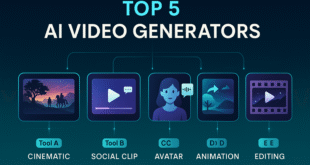Veo 3 is Google’s latest text-to-video and image-to-video AI model. It lets you describe a scene in words (or provide an image) and then generates a short video clip along with visuals, motion, and even synced audio.
Launched in mid-2025, Free Google Veo 3 represents a major leap over earlier iterations because it now integrates native audio: ambient sounds, sound effects, and even dialogue.
In simple terms: if you can imagine it, Veo 3 can render it. Whether you want “a superhero flying over a neon city at dusk” or “a cartoon dog tasting ice cream on Mars,” you type or upload a reference, and the AI produces a video clip matching your prompt.

Why is this important? Video creation has typically required expensive cameras, editing software, and skilled editors. It lowers that barrier. It gives creators, marketers, educators, and storytellers a way to generate compelling visuals rapidly.
In short, Veo 3 opens up creative video generation to a much wider audience. Thus, understanding how it works, what features it brings, how to access it, and whether the “free” label is accurate becomes highly relevant.
Features of Google Veo 3
Table of Contents
The following are some of the cool features:
Text-to-Video Generation
With Veo 3, you write a sentence like “A red sports car drifting through a rain-soaked Tokyo alley under neon lights,” and Veo translates it into a short video clip. The AI interprets camera angles, lighting, motion, and scene composition. Text-to-video simplifies storytelling: you no longer need to shoot scenes yourself; you only need a clear prompt.
Cinematic Quality and Realism
Veo 3 supports high-fidelity outputs (720p to 1080p) with realistic motion, natural lighting, and synchronized audio. Models like this raise the bar so creators can achieve near-cinematic visuals at much lower cost and effort.
Smart Motion Understanding
Unlike earlier, simpler video-AI models, Veo 3 understands basic physics, camera movement, and scene continuity. This means objects move believably, characters don’t float awkwardly, and camera pans make sense.
Multi-Modal Creativity (Text + Image Input)
You don’t have to rely purely on text. You can upload reference images and instruct Veo 3 to generate videos that follow the look & style of those images. For example: “Use this character sketch + this scene photo, make a 10-second clip of them walking through a forest at dawn.” That level of control is very useful for branding, animations, or concept work.
Seamless Integration with Google Ecosystem
Veo 3 plays within Google’s broader AI stack. It integrates with the Flow video-editing tool, the Gemini API, and Vertex AI for enterprise usage. That means you can move from prompt to production in one ecosystem.
How to Use Google Veo 3 for Free (Step-by-Step Guide)
If you’re interested in experimenting with Veo 3 without an upfront cost, follow this guide. Please note: “free” may mean trial or limited access. (More on that in the next section.)
Step 1: Sign in with your Google account
You need to use your Google account to access Google’s AI tools.
Step 2: Visit the right interface
- You can go via the Gemini app (mobile or web) if Veo 3 is enabled there.
- Or go to Google’s AI Studio or Vertex AI portal for preview access.
Step 3: Join any waitlist or request access (if required)
Since Veo 3 is advanced, Google may require you to join a waitlist or request a preview. Stay alert for invites or promotional access.
Step 4: Generate your first video
- Choose “Create video” (or similar) in the interface.
- Input a text prompt describing the scene you want.
- Optionally upload reference images to guide style or objects.
- Choose aspect ratio (16:9 landscape or 9:16 portrait for social media).
- Click generate, and that’s it; you’ll get a short video clip (typically around 8 seconds in many cases) with visuals and sound.
Once generated, you can preview the clip, make edits if allowed, then download or publish. Be mindful of usage rights and licensing, especially if you plan commercial use.
Pro tip:
- Use clear and descriptive prompts: include mood, lighting, and camera movement.
- If you upload an image, specify “style like this image” or “character looks like this.”
- For social-media-friendly output, use a portrait 9:16 ratio.
You can quickly try out Veo 3 and start experimenting with AI-driven video creation by following these steps.
Real-World Uses of Google Veo 3
Veo 3 isn’t just for hobbyists. Its capabilities open real value across multiple domains:
Content Creators & YouTubers
Creators can produce intros, explainer clips, scene transitions, or conceptual visuals without needing full film crews. For example, a YouTuber might type “a wizard standing on a cliff as lightning strikes and a dramatic choir rises” to get a compelling opener.
Marketing & Brand Storytelling
Marketers can generate short cinematic scenes that align with brand identity. Suppose you have a new product: you could ask Veo 3 to show “a sleek smartwatch spinning around in space, light beams reflecting, logo fading in.” That kind of visual can support social posts or ad reels.
Education & Training Videos
Teachers or trainers can create explanatory visuals cheaply. For example, “human heart beating, cross-section view, blood flow visible” can become a short loop for a biology lesson.
Film Pre-Visualization & Concept Art
Filmmakers can use Veo 3 as a pre-viz tool. Upload a storyboard image, generate the clip, and use it in pitch meetings or planning, thereby saving time and cost.
Since Veo 3 supports portrait mode and short durations, it aligns with TikTok, Instagram Reels, and YouTube Shorts. You can generate “an astronaut doing a dance on Mars under pink skies” and post it as eye-catching social content.
These real-world uses show how Veo 3 expands creative access and lowers the barrier for high-quality video production.
Is Google Veo 3 Really Free?
Let’s clarify what “free” means when you see terms like “Google Veo 3 free.” The reality mixes trial access, promotions, and paid tiers.
Free or Trial Access
Google has, at times, offered limited free access to Veo 3 via the Gemini AI: for example, some users got 3 free video generations during a promotional period. These promotions allow you to try Veo 3 without paying, but they usually come with limits such as the number of videos, duration, quality, or usage scope.
Paid Tier & Subscription
For full functionality, longer videos, higher resolution, or commercial licensing, Veo 3 generally requires payment. For example, enterprise access via Vertex AI has a cost associated with it. Thus, the “free” label often means “limited free trials” rather than unlimited free use.
- Video length may be capped (e.g., 8 seconds in some previews).
- Resolution may be reduced in the free tier.
- Some aspect ratios or audio features may be locked behind paid access.
- Usage may be non-commercial or subject to licensing limits.
Comparison with Competitors
When comparing Veo 3 to other AI video tools, you’ll find many offer free tiers with restrictions. But as demand grows, “free” is increasingly promotional rather than permanent.
Bottom line: Yes, you can try Veo 3 for free under certain conditions, but for full power, expect costs or limitations. Be clear on what “free” means for your intended use.
Pros and Cons of Using Google Veo 3
Here are key advantages and considerations to weigh before you go for it.
Pros
- High realism & quality: Veo 3 produces visually compelling and audio-synced clips.
- Ease of use: You write a prompt (or upload an image) and the tool generates the video.
- Creative accessibility: Enables people without film equipment or editing expertise to produce video content.
- Integration with Google ecosystem: Works with Flow, Gemini, and Vertex AI, which makes scaling and professional output easier.
Cons
- Access limitations: Full features are often locked behind paid tiers or geographic restrictions.
- Short duration: Many output clips are still only a few seconds (e.g., 8 seconds) in free/preview modes.
- Potential quality variance: While advanced, it may still produce artifacts or awkward motion in complex scenes.
- Commercial/licensing ambiguity: Make sure you check rights if using videos in public or monetised contexts.
Overall, if you need short, high-impact clips and you’re comfortable experimenting, Veo 3 offers excellent value. If you need full-scale production, longer videos, or guaranteed output quality, you should evaluate cost and limitations carefully.
Future of AI Video: What’s Next After Google Veo 3
The launch of Veo 3 marks only the beginning of what we should expect in AI-video generation.
Longer clips and full narrative flows
Currently, many videos are ~8 seconds. Future versions will push durations, scene-to-scene continuity, and full narrative arcs. Indeed, Veo 3.1 already introduces some extended-clip functionality.
Better editing and fine-control tools
Future versions will allow more granular control: replace objects in a scene, maintain character consistency across multiple clips, refine camera movement, adjust audio, etc. Veo 3.1 already adds features like “Ingredients to Video,” “Frames to Video,” and scene extension.
Integration with full creative pipelines
Expect deeper integration with editing suites, VFX pipelines, real-time collaboration tools, and film production workflows. As Veo models become more robust, they will move from novelty to studio-grade tools.
Wider accessibility and new formats
As AI video becomes cheaper and faster, we’ll see new formats tailored for AR/VR, interactive storytelling, real-time video adaptation (e.g., in games), and personalised video content.
Ethical, legal, and safety frameworks
With the ability to generate realistic scenes, issues like deepfakes, misinformation, and copyright will become more critical. Developers will build better watermarking, provenance tracking, and moderation tools. (For instance, Google embeds SynthID watermarks in output.
In short, if Veo 3 opened the door, the coming versions will expand the room dramatically both in creative potential and in responsibility.
Should You Try Google Veo 3 Free Today?
If you’re a creator, marketer, educator, or simply curious about AI-driven video, yes, you should try Veo 3 free today while the opportunity exists. The tool offers real creative value, like you can generate compelling short videos, experiment with storytelling, build social-media assets, and explore new formats.
However, go in with realistic expectations: the “free” access may be limited in duration, output length, resolution, or licensing. Read the terms before you publish commercially. Also, expect that for large-scale production or longer videos, you may need to pay or wait.
Here’s a quick checklist:
- Do you need short, punchy clips (5-10 seconds) for social, intros, or concept visuals? Then Veo 3 is a great fit.
- Do you need long-form video, complex editing, or guaranteed flawless output? Then treat this as one tool in your toolkit, not the full solution yet.
- Want to experiment, iterate, and prototype quickly? Absolutely go for it.
Try it now, learn the strengths and limitations, and position yourself to use future releases. The AI video era is accelerating, and Veo 3 gives you a front-row seat.
